|
The weather has been gloriously warm and inviting the past few days. And I, for one, am enjoying this brief throwback to summer. It was made even better by the perfect timing of a few samples of Albariño wine that arrived on my doorstep. These wines hail from DO Rías Baixas, which is located in the northwestern corner of Spain in the Galicia region. The Miño River separates it from Portugal to the south. Rías Baixas is divided into five growing areas (sub-zones) running from north to south. More than 99% of wines produced here are white, with Albariño, an indigenous grape, representing 96% of all plantings. The Atlantic Ocean is a key influence on the climate in Rías Baixas, with each sub-zone differing in grape varieties, terroir, microclimates and winemaking techniques. However, one main theme is the granite soils that are dominant throughout the region. The wines all share a common thread with characteristics of a soft yellow color, floral aromatics, vibrant acidity, fresh and dry, with mineral overtones. Bodegas La Val Albariño DO 2019 The vineyards for this wine are located in the sub-zone of O Rosal, located at the river Miño. O Rosal enjoys warm weather with granite bedrock and alluvial topsoil. Terraced hillside vineyards stretch along the sides of the Miño. This 100% Albariño is a blend of two of the winery’s estate vineyards. A lovely bouquet of floral blends with white stone fruit and citrus that continues onto the palate. Notes of peach, apricot, pear, citrus and a touch of herbs linger on the finish. This is a fresh and lively wine. Pair with seafood, roasted chicken, appetizers and light pasta. Or enjoy it as an aperitif! Alcohol: 13% SRP: $16.99 Condes De Albarei Albariño DO 2019 The vineyards for this wine are located in the sub-zone of Val do Salnés. It is considered the birthplace of the Albariño grape and it is the original and oldest sub-zone of Rías Baixas. It has the most area grape plantings and is home to the largest cluster of wineries than any of the other sub-zones. Vineyards are planted on both slopes and flat valley floors. It is the coolest and wettest sub-zone with soils that are granitic, rocky and alluvial. For this wine, only vines that are older than 23 years are used and are hand-selected. Vibrant aromas of floral, pineapple, white stone fruit and citrus segue onto the palate. Melon, hints of orange and a touch of minerality linger on the finish. It is well balanced with crisp acidity. Enjoy as an aperitif or serve with seafood, salads and grilled veggies. Alcohol: 13% SRP: $18 Señorío De Rubiós Robaliño Albariño DO 2019 The vineyards for this wine are located in the sub-zone of Condado do Tea. It is named after the river Tea, a tributary of the Miño River. This is the second-largest sub-region of the Rías Baixas. It is a relatively mountainous area along the Miño, with a warmer and drier area more inland. The average temperature here is 59 degrees but can reach 104 degrees during the summer. Soils contain granite and slate. The nose is met with enticing aromas of floral, peach, apricot and notes of minerality. This is a rich and silky wine with notes of grapefruit, peach and apricot on the palate. Good structure and vibrant acidity follow through to the finish with white stone fruit, grapefruit and a hint of herb lingering. Enjoy as an aperitif or serve with seafood, appetizers, white meat and cheese.
Alcohol: 12.5% SRP: $19 All of these wines can be enjoyed year-round, but I’m taking advantage of the warm weather to drink them now! Until next time… Cheers! Penina To leave a comment or if you have an inquiry, please contact me at [email protected] I had every intention of sitting down to write a wine story today. There is certainly no shortage of wine and spirits to explore. Samples are delivered to my home almost daily, in addition to frequent virtual wine tastings. But I need to pause. The world is watching the United States as it waits with bated breath for the outcome of the Presidential election, and the anxiety that we all feel is palpable. I thought perhaps I would write a story about “go-to” election drinks to get us all through a very stressful time. But it just doesn’t seem fitting for this particular election, when our future and our children’s future hangs in the balance. Instead, I will embrace the day, breathe slowly and soak up the sun and fresh air. And perhaps this evening I’ll open an old vintage wine. Whether it is a special bottle of wine, a glass of aged bourbon, a power walk, yoga, listening to music, dancing or breathing exercises, do whatever it takes to relieve the election stress. Find your inner peace, and remember to breathe! I will be back in a few days with stories and hopefully, after the election results, peace of mind!
Until next time… Cheers! Penina To leave a comment or if you have an inquiry, please contact me at [email protected] The “new norm” for socializing and engaging with friends and family for the past seven months has mainly been conducted online. This is also true for meeting with winemakers, participating in virtual wine tastings and experiencing life abroad while sitting in my living room. Recently, I took part in a virtual wine tasting and food pairing hosted by Italian winemaker Sandro Bottega, co-owner of Bottega SpA headquartered in Bibano, Treviso in the Veneto region of northern Italy. The company produces Prosecco DOC and grappa here. In addition, they have another winery in Conegliano for the production of Prosecco DOCG. Bottega also manages wineries in Valpolicella and Montalcino. Sandro is third-generation of this family-owned company founded almost 40 years ago by his father, Aldo Bottega, a Master Distiller. What began with the family’s forefathers in the 17th century through the 1920s working and cultivating the vines as tenant farmers, landowners and wine traders, eventually evolved over time with Aldo Bottega following his passion for making grappa. In 1977, Aldo established his own distillery, Distilleria Bottega. After Aldo’s passing in 1983, his son Sandro became the company director and together with his siblings Barbara and Stefano, the company has grown to include the production of sparkling and still wines and liqueurs. In 1992, Bottega released its first sparkling wine. The company manages several different brands, among which are Bottega sparkling wines, Alexander Grappa and Accademia. Bottega’s motto is “Fatto A Mano”, which means ‘handmade’. Their mission is to work and achieve the highest levels of quality, design and sustainability. Our wine tasting for the afternoon included sparkling wines, a chocolate liqueur and gin. The food was provided by igourmet.com All of the bottles are beautifully designed and made of hand-blown Venetian glass in Bottega’s glass factory. I asked Sandro what his motivation was for using Venetian glass for his products. Sandro said, “It is important to make a completely original product from the wine or grappa to the packaging in an expression of our territory and of our culture. Another important reason I use this glass is that I like it! In my company, everything I do is not only because it is a business, but it has to be first and foremost because I like it.” Academia Prosecco Rainbow Collection is a brand that celebrates the art of Venetian glassmaking and the city’s festive carnival atmosphere. Each bottle of this collection contains Prosecco DOC. There are eight colors to choose from (black and white bottles not shown in photo) and can be combined to “create a rainbow of emotions”. Mix and match to celebrate specific holidays or events. They make great gifts for the upcoming holidays! Prosecco Spumante DOC Brut 100% Glera grapes are hand-harvested from manually maintained and sustainable vineyards in Treviso Plains. The wine is produced using the Martinotti (Charmat, tank) method. The color of this sparkling wine is pale lemon with lovely aromas of floral, apples and citrus. It is fresh and lively with flavors of apple, pear, pink grapefruit and a touch of floral. It has a creamy mouthfeel, fine bubbles and apples lingering on the finish. This wine was paired with a variety of cheeses, cold cuts, olives and pesto crackers. Alcohol: 11% SRP: $17.99 Il Vino dell’Amore Petalo Moscato Spumante Dolce 100% Moscato grapes are hand-harvested from vineyards in the Euganean Hills of Veneto. These hills contain volcanic soil, rich in potassium and alkaline soil that contributes good acidity, minerality and higher sugar content. The wine is produced using the Martinotti (Charmat, tank) method. The color is golden with a consistent and fine perlage. Classic aromas of apple, peach and rose mingle with fruity notes. On the palate, this refreshing sparkling wine offers honeysuckle, apricot, white stone fruit and a touch of minerality, balanced nicely with good acidity and sugar. It was paired with aged cheese, Gouda, pumpkin butter and water crackers. Simply divine! Alcohol: 6.5% SRP: $15.99 Gianduia Chocolate Cream Liqueur Gianduia chocolate was created in Piedmont in 1806 and has a unique bouquet of cocoa and nuts. Gianduia Bottega is a unique liqueur made with Bottega’s premium Alexander grappa from the Veneto region and Gianduia Chocolate. Grappa is mixed with milk cream (sourced from Alpine cows that only eat grass) that is homogenized and filtered to remove the fats. It is then mixed with sugar, chocolate and hazelnut paste. Heavenly aromas of cocoa and nuts segue onto the palate for a creamy and most inviting experience. Rich hazelnut flavors and cocoa contribute to this decadent liqueur and is best served cold. Sandro likes to drink this neat. However, it can be poured over ice, served over ice cream, with fruit, in a cocktail, or in your coffee. This liqueur was paired with a pumpkin spice truffle bar, dark chocolate bar and Biscotti. Alcohol: 17% SRP: $24.99 Bacur Gin This dry gin is certainly eye-catching with its unique metallic copper bottle. Italy is one of the largest producers of juniper, especially around Tuscany. And considering it is the main ingredient in gin, it was a simple leap for Bottega to produce gin. The other ingredients are pure grain, water from the Italian Alps, sage leaves from the Veneto countryside and Sicilian lemons.
This gin has aromas of sage, juniper and citrus notes that segue onto the palate mingling with a hint of perfume and lemon zest. It is smooth and delicate. I consider this a sipping gin, but I’m sure that it will spice things up when added to cocktails. Alcohol: 40% SRP: $39.00 If you would like to learn more about the grapes, regions, territories and production methods mentioned in this story, please click on the topic of interest to the right of this page. Until next time… Cheers! Penina To leave a comment or if you have an inquiry, please contact me at [email protected] Halloween was always a favorite holiday of mine growing up. I loved making my own costumes and strategically planning the Trick or Treat route with my friends. When I was deemed “too old” to participate in trick or treating, we turned to rock and roll costume parties and haunted hayrides. Having children of my own gave me a window of opportunity to once again make costumes, dress up and go trick or treating with them. It was fun while it lasted until it wasn’t cool anymore to be seen with “mom” on Halloween. For those of you who still yearn to go trick or treating, why not arrange a few house stops with your 21+ age friends? Dress up; grab a trick or treat bag and exchange wine and spirits along with candy and make it a grownup version of Halloween! I’ll be handing out bottles of sherry and special chocolate treats to pair with it. Sherry is a fortified wine produced in Andalucía, located in the southwest area of Spain. With over 40,000 hectares of vineyards in Andalucía, more than half of the wine produced here is in DO (denomination de origin) areas. Sherry can only be made from Palomino, Muscatel and Pedro Ximénez white grapes. To learn about the terroir of Andalucía, how sherry is made and all the sherry styles available, please click on the link below that will take you to a story on my website. http://thewineknitter.com/1/post/2017/10/day-606-sherry-fest.html Harveys Bristol Cream DO Jerez Xérés Cream Sherry is usually a blend of Oloroso, PX (Pedro Ximénez), or Moscatel styles, but can be made in a variety of styles. It is a semi-sweet wine that is aromatic, dark in color with classic notes of nuts and caramel. This cream sherry is a blend of 80% Palomino and 20% Pedro Ximénez grapes. It is a unique combination of Fino, Amontillado, Oloroso and Pedro Ximénez styles of sherry that have been aged separately in the solera system, averaging seven years of aging. Harveys Bristol Cream is the only sherry made up of a blend of four different styles that exist. This sherry is dark amber with intoxicating aromas of dried fruit, raisins, nuts and toffee. The palate is layered with raisins, caramel, fig, toasted almonds and a creamy mouthfeel. This is a nice sherry to drink as an aperitif or serve with desserts, cheese and fruit. Pour it over ice cream or serve with ice and a twist of orange. It also goes well with pumpkin muffins! Serve well chilled. Alcohol: 17.5% SRP: $20 González Byass Alfonso Oloroso DO Jerez Xérés Oloroso (‘scented’ in Spanish) intentionally never develops flor (yeast). Aging through oxidation of up to 40+ years produces a full-bodied, aromatic, dark and rich wine. Oloroso contains the most amount of alcohol in sherry, with levels of 18% to 20%. This dry sherry is 100% Palomino Fino. The wine is fortified to 18% alcohol and then is aged for an average of eight years in American oak casks following the traditional solera system. Mahogany in color, this dry sherry exudes aromas of nuts and toffee. The palate offers dried figs, salted nuts, especially peanuts and traces of toffee and vanilla on the finish. Serve chilled. It will pair well with meats, stews, mild cheese and dark chocolate laden with nuts. Add a splash while cooking soup or sautéing seafood. Alcohol: 18% SRP: $25 González Byass Nectar Dulce Pedro Ximénez DO Jerez Xérés Pedro Ximénez (PX) is an intensely sweet wine and is the sweetest of the sherry styles. The grapes are dried in the sun allowing the juices to concentrate before pressing. This is a rich wine that oozes raisins, nuts and fig. This sherry is 100% Pedro Ximénez. The wine is fortified to 15% alcohol and then enters the Nectar solera. It is followed by an average of eight years of aging in American oak casks. This dark brown colored sherry emanates intoxicating aromas of raisins, prune, fig and honey. The palate is rich and unctuous, with raisins, baking spice and toasted notes of caramel, toffee and espresso. A long finish is accompanied by a hint of nuts. Enjoy it chilled as a dessert wine on its own or poured over ice cream or berries. Heavenly! Alcohol: 15% SRP: $25 The Red Chocolate bars are sinfully delicious, with up to 50% fewer calories and 30% to 40% less fat. They are made with cocoa from the Ivory Coast of Africa and no added sugar. I tried the chocolate with all three styles of sherry, and my palate was quite happy! Wishing you a safe, socially distanced and Happy Halloween! Until next time…
Cheers! Penina To leave a comment or if you have an inquiry, please contact me at [email protected] With over 250 indigenous grape varieties officially registered in Portugal, one can imagine how much there is to explore here when it comes to wine production. I have had the opportunity to taste a myriad of varieties and enticing blends throughout Portugal’s 14 wine regions and my palate is rarely disappointed. I recently received two white wine samples featuring the Loureiro grapes from the Vinho Verde wine region and I was quite eager to taste them. The Loureiro grape is grown primarily in Portugal’s Vinho Verde region. Of Portugal’s 14 wine regions, Vinho Verde is the largest DOC (Denominação de Origem Controlada) located in the northwest corner of the country. The boundaries for the region were set in 1908 and it is believed to be one of the oldest regions in Portugal. Vinho Verde stretches from the Minho River in the north, separating northern Portugal from Spain to the Atlantic Ocean bordering the west and the Douro River running through the southern border of the region. Several other rivers traverse through Vinho Verde, which includes the Ave and Cávado. Vinho Verde is divided into nine sub-regions and grows a variety of grapes in fertile, granite and sandy soils with rainy, humid and cool temperatures created by its proximity to the Atlantic Ocean. Vinho Verde is noted for producing wines that are fresh with crisp acidity and exceptional quality-to-price ratio. The Loureiro grape is a light-skinned variety known for its floral aromas. Wines of Portugal states, “Although now widely disseminated throughout the Vinho Verde region, it seems that the Loureiro grape originated in the valley of the River Lima, towards the north of the VR Minho/DOC Vinho Verde region. "Loureiro" means "laurel" or "bay" and the aroma of Loureiro wines is said to resemble that of laurel flowers, also orange blossom, acacia and lime blossom, overlaying apple, peachy fruit. Loureiro wines usually have refreshing, well-balanced acidity. Loureiro is much in evidence nowadays bottled as a single variety, but traditionally it was more often blended with Arinto (Pedernã) and Alvarinho, or with Trajadura. It is a very vigorous, high-yielding variety that has only recently been recognized as "noble". The bunches are elongated and relatively compact, bearing medium-sized, yellowish-greenish grapes.” Esporão Bico Amarelo 2019 This is the debut vintage of Bico Amarelo (Yellow Beak). Esporão is a cutting edge winery with a presence throughout Portugal. They have approximately 700 hectares of prime agricultural areas that include wine vineyards, olive groves and other crops planted mainly in the Alentejo and Douro wine regions of Portugal. This wine is a blend of 40% Loureiro hand-harvested from Quinta Do Ameal in Vinho Verde and 30% Alavarinho and 30% Avesso sourced from nearby growers. The wine is aged for three to six months in stainless steel vats. Lovely floral aromas combine with notes of fresh stone fruit and citrus. The palate is entertained with lively acidity, lemon, green apple and a hint of peach. This is a light and refreshing wine. Alcohol: 11.5% SRP: $12 Quinta do Ameal Loureiro 2019 Quinta do Ameal is a historic estate founded in 1710 in the Lima sub-region of Vinho Verde. Lima River Valley is considered the birthplace of Loureiro. The estate has 30 hectares of vineyards, of which 14 are dedicated to the Loureiro grape. In 2019, the Esporão group became the new owners of Quinta do Ameal. This wine is 100% Loureiro hand-harvested from estate-grown fruit. It is aged for seven months on lees in stainless steel vats. Enticing floral notes mingle with citrus and fresh fruit. The palate offers fruit blended with lots of lemon, an edge of minerality, subtle herbs, a touch of tart apple and vibrant acidity. It is refreshing, light and quite enjoyable with lemon zest on the finish.
Alcohol: 11% SRP: $18 Both wines will drink beautifully as an aperitif or pair nicely with seafood, cold soups, salads and grilled vegetables. Until next time… Cheers! Penina To leave a comment or if you have an inquiry, please contact me at [email protected] It was June of 2016 while attending the Descorchados NY South American wine event that I first met Felipe Ortiz. Felipe is Chief Winemaker for Casa Donoso located in the Maule Valley of Chile. I remember being caught up in his enthusiasm and passion as he introduced me to his very intriguing wines. Felipe said that the Maule Valley had a “multiplicity of characters” and then gave a general description of the wines. “White wines are very fresh with mineral traces, in particular our Sauvignon Blanc. Red wines with short maturity cycles show a very good balance between alcohol and acidity, like Merlot and Cabernet Sauvignon. And above all, a nice and silky Carménère is a tricky and demanding variety which is hard to mature properly in other valleys”. One year later we met again at the same event. And once again, my palate was treated to Felipe’s expressive wines. We have stayed in touch throughout the last few years with the hope that I might visit Casa Donoso one day. I have not had the opportunity to travel to Chile yet, and now with travel on hold for most of us, it is unlikely that I will visit there any time soon. So, Felipe sent Casa Donoso to me with a bountiful shipment of wines and a candid long-distance conversation. Chile is a long and narrow country bordering the Pacific Ocean to the west, and to the east lie the Andes Mountains, which is among the world’s highest mountain range in the Western Hemisphere. Chile spans 2700 miles running from north to south and is only 100 miles wide. Its numerous wine regions are then divided into sub-regions. Due to the expansive range of terroirs, the style of wines made here has an equally wide range, with most of the climatic variations in the wine-growing regions running from east to west due to the influence of the ocean and mountains. Casa Donoso is located in the sub-region of Talca, which is in the heart of the Maule Valley and is part of the DO Central Valley region. Maule Valley is the largest wine-producing region and also the oldest wine-growing region in Chile. Some of the countries’ oldest vines that were planted over 100 years ago still exist here. It is also one of the southernmost wine-growing areas of Chile. The soils throughout Maule Valley are of sedimentary origin, such as sandy and deep clay loam and the climate is Mediterranean. The main grapes grown here are Cabernet Sauvignon, Carménère, Merlot, Carigñan, Sauvignon Blanc, and Chardonnay. Casa Donoso was created 30 years ago by a group of French investors who saw the potential of this unique terroir. They made it their mission to focus on the production of premium wines from the onset. They were among the first foreign investors to introduce modern technology to the winemaking industry in Chile. In 2014 the Selume family, a national group, took over. Felipe said, “They continue to follow the line of quality in the wines. We have a French heritage from the beginning as well as a new world winemaking vision, which allows us to generate high-level wines. Casa Donoso is a classic and elegant concept in the Maule Valley.” Felipe Ortiz joined Casa Donoso in 2008. I asked Felipe how he became interested in winemaking and where he received his training. Felipe: “I think my first approach to the wine world was thanks to my father. He always showed me varieties of wine pairings with food when I was young. Then at the university, I studied Agronomy Engineering in Chile. To be a winemaker here, you must first study agronomy. During the last years of my studies, I leaned towards viticulture and enology, a branch of agronomy. In Chile, before I finished the university, I started working during the vintage season at Los Vascos for a total of four vintage seasons. Then I also worked at Viña San Pedro during another harvest season.” Felipe graduated with a degree in Agronomy Engineering and Enology. From 2006 to 2008 he went on to develop his career working with wineries in California, Provence and Barossa Valley in Australia. It was the middle of 2008 when he joined Viña Casa Donoso where he is now the chief winemaker. Felipe is a member of the Chilean Association of Engineering Agronomists Enologists. (ANIAE) Casa Donoso has 400 hectares of vineyards located throughout Maule Valley from central Maule to the coastal and pre-mountain zones. The altitude on average is 100 meters (328 ft) above sea level. One of their vineyards, La Oriental Estate, is in central Maule and one of the oldest estates in Talca with 123 hectares and vines that are more than 60 years of age. The Donoso portfolio of wines is diverse and has several different brands representing a range of traditional and atypical red blends. When I met Felipe in 2016, the very first wine he poured for me was Sucesor Romano Limited Release 2015. Sucesor is considered “the avant-garde line of the Donoso group.” It is also a project that has inspired Felipe and allowed his creativity to shine through with these daring blends. Felipe, tell me about Sucesor and its inception. Felipe: “Successor was created with the need to seek oenological innovation. In 2013 we started working with Carigñan with a more friendly and assembled concept called Successor BLUE. Then in 2014, we developed Sucesor Romano, a challenging project made with the César noir grape that was almost extinct in the world. Jean-Michel Boursiquot is a renowned ampelographer, who rediscovered what is now Chile’s flagship grape variety, Carménère. He also discovered the César noir grape (Romano, colloquial name) in our fields in the ‘90's. He later helped us with the information process to register the grape in Chile. We have just 0.5 hectares of this variety in our vineyard and we are the first winery in Chile to commercialize this grape. We continued our project with Sucesor RED, which is Carménère assembled with Malbec, also an unusual mix in Chile and the world. And, starting in the year 2019, we began developing a new project with Sucesor, using the grape, Portuagais Bleu. We hope to release this project in the coming year.” What is the most challenging grape for you to work with? Felipe: “I think with relevance to the Sucesor project, it is César noir. It is a very delicate grape, which we have to cut at the right time without losing freshness. Then in the winemaking process we try not to over-extract it too much. Finally, the wine rests for short storage in Spanish amphoras and another part in used barrels (not new), which increases its potential. César noir originates from Burgundy, strongly planted in the Irancy area, where history tells that it is mixed with fine Pinot noir to improve its concentration. In Chile, it is estimated that it arrived during the year 1945. But there is information that it may have even arrived earlier.” Has climate change affected your approach to winemaking? Felipe: “Undoubtedly! Ten years ago, the Maule Valley (160 miles from Santiago in southern Chile) was much colder and we had to wait longer than normal for grapes to mature. For example, Carménère harvesting took place at the end of May. Today climate change has affected an increase in temperatures where the same Carménère is harvested 30 to 45 days earlier. Unfortunately, together with climate change, we have had to adapt to drought and low rainfall over time. So we have to generate new ways to advance in winemaking. Each year is different; there are no recipes to produce good wine.” The Wines D Icon Limited Edition 2015 This is an unfiltered, Bordeaux-style wine blended with 40% Cabernet Sauvignon, 30% Carménère, 20% Malbec and 10% Cabernet Franc. Grapes are harvested from 70-year-old vines. Wine is aged for 24 months in French oak barrels, of which 25% is new oak. Aromas of dark berries, spice and a touch of floral lead to a luscious palate of plum, blackberry, spice and vanilla. It is beautifully blended with silky tannins and a long finish. A trace of herbs and vanilla linger. Felipe: “It is a very elegant and aromatic wine, not very concentrated, Bordeaux style, but with a lot of character of our terroir. For me, it shows a very elegant and classic concept of Maule valley!” Alcohol: 14% SRP: $55-$65 1810 Super Premium Cabernet Sauvignon- Carménère 2017 The blend for this wine is 50/50. Grapes are harvested from 40-year-old vines and the wine is aged for 18 months in French oak barrels, of which 15% is new oak. The name for this wine honors an important part of Chilean history. Talca was the site where the Chilean Act of Independence was signed in 1810. Dark berries, plum and spice aromas segue onto the palate with notes of fig, toast and vanilla. This is a subtle and smooth wine with firm tannins and a lengthy finish. It is very elegant. Felipe: “It shows what is done with these two varietals in Chile, a lot of country image in this wine and another of our classic wines. It is of the classic line, but with a very marked concentration and intensity.” Alcohol: 13.5% SRP: $30-$35 Bicentenario Gran Reserva Carmenere 2018 This wine is 100% Carménère. Grapes are sourced from 30-year-old vines. 70% of the wine is aged for 12 months in French and American oak barrels and the remaining 30% is kept in stainless steel tanks. The name and label are a tribute to 200 years of independence for Chile. Subtle floral aromas mix with fresh red fruit that gently spills onto the palate with notes of raspberry, dark berries, spice and soft tannins. It finishes nicely with a hint of toasted oak. Felipe: “This Carménère follows a line that is NOT overripe or high alcohol but is a very fresh Carménère. Red fruit, mild spices, and an elegant mouth. One of the characteristics of the Maule Valley is the freshness of the wines (different to other valleys in Chile)” Alcohol: 13.5% SRP: $16-$20 I love what the back label for the Sucesor wines says. “Sucesor is the disordered line of Casa Donoso Winery where our winemaker proposes daring and innovative blends that step out of the classic style of the winery. These wines have been created for all wine lovers who are each day bolder.” Sucesor Blue Limited Release 2015 This is a blend of 60% Carigñan, 25% Cabernet Sauvignon and 15% Cabernet Franc. Grapes are harvested from 80-year-old vines in the coastal vineyards of Loncomilla. 30% of the wine is aged in Spanish amphoras for 18 months and 70% in French oak barrels for 15-18 months. Lush dark and red berry aromas leap out of the glass with a touch of floral and dark cherry added. This wine is smooth and delicious with berries, plum and mocha dancing on the palate. Subtle notes of minerality blend well with this refreshing red. Felipe: “This shows the Carigñan in another face from the normal. it is a fruity, fresh wine style, assembled with Cabernet and Cab Franc. It also does not pursue a lot of alcoholic degrees and is a very friendly concept of Carigñan. Part of its aging is using Spanish amphoras, which reflects a very powerful fruit.” Alcohol: 13.5% SRP: $35-$45 Sucesor Red Limited Release 2016 This is a blend of 80% Carménère and 20% Malbec. Grapes are harvested from 40-year-old vines. 30% of the wine is aged in Spanish amphoras for 18 months and 70% in French oak barrels for 15-18 months. Heady aromas of floral mingled with red fruit and spice spill onto the palate to reveal notes of strawberry and cherry that blend nicely with spice and a trace of red plums. Silky tannins and a long finish with vanilla and spice lingering will make any palate sing. Felipe: “This wine shows a very different face of Carménère mixed with a Malbec. It has floral notes and generates a very interesting nose. In the mouth, there is a bit more concentration and intensity but without losing the elegance of the Carménère (soft tannins). Sucesor plays with amphoras in the aging, which is characteristic of the line.” Alcohol: 13.5% SRP: $35-$45 Sucesor Romano Limited Release 2018 This is the first time I have tasted a wine made with César noir. It is a blend of 90% César noir and 10% Carménère. Grapes are harvested from 70-year-old vines. 50% of the wine is aged in Spanish amphoras and 50% in French oak barrels for a period of eight to ten months. Seductive floral aromas with notes of red fruit, raspberry and spice set the stage for this delicious wine. Floral notes continue onto the palate with layers of rich berries, spice and plum. Minerality, hints of herbal and nice acidity add depth to this juicy wine. The finish is long with violet, vanilla and mocha lingering on the palate. Felipe: “Cesar noir has been a rediscovery of this variety in Chile, which we found in our fields. It is a project that started in 2013 and the first vintage was 2015 and introduced around the world (USA, EU, ASIA, Brazil). We were the first winery in Chile to show this wine. It is a very fresh wine, red fruit, medium body and characteristic juiciness of this Maule Valley. It is a very different proposal and an invitation to the innovation of all this Sucesor line.” Alcohol: 13.5% SRP: $35-$45 After tasting through these wonderful wines, I’m eager to know what the Donoso Group has in the pipeline for the future. What goals in winemaking are you still looking to achieve? Felipe: “I think to continue doing work with grapes that are little worked on or lost in the world such as Cesar noir and Portugais Bleu. The innovation side I think is very challenging as a winemaker. Also, Donoso Group supports these developments and I feel very pleased about it. My pursuit is to make wines that fully reflect the terroir that they come from, always generate a unique character independent of the variety and finally make wines that the consumer remembers and enjoys always.” Of course, I can’t end this conversation without asking what your personal favorite wine is to drink? Felipe: “I think my favorite wine depends on the moment. For example, for a barbecue I look for wines with a higher concentration such as Cabernets or mixtures based on cabernet, it can also be a Carigñan. If we talk about seafood, what better wine than a rich Sauvignon blanc from the Maule foothills. For milder or spicy foods there are many alternatives such as Carménère, Romano, Malbec, among others.” Felipe has definitely captured the essence of the terroir in these wines and sipping them has brought me a tad closer to Chile. However, I can’t wait until the doors open once again for traveling. I’m looking forward to a 360-degree tour of Casa Donoso and another wine tasting with Felipe! Until next time…
Cheers! Penina To leave a comment or if you have an inquiry, please contact me at [email protected] It is hard to believe that one year has passed since I visited Germany. It was a magical trip immersed in breathtaking sights, memorable food and wine and the charming culture of the Franken wine region. I have longed to return and explore Germany’s other wine regions, but thanks to COVID-19, travel will have to wait. The timing couldn’t have been more perfect for a recent delivery this past week of a few Rieslings from Weingut Nik Weis St. Urbans-Hof located in the Mosel wine region of Germany. Sipping these expressive wines was a treat and made me nostalgic for the friends I made and the fabulous wines that I tasted while in Germany. Weingut Nik Weis St. Urbans-Hof is located in the village of Leiwen in the Mosel Valley. It is considered one of Germany’s premier estates with about 45 hectares of vineyards that stretch along the Mosel and Saar rivers making it the second-largest family-owned and operated winery in the Mosel. Nicolaus Weis founded the winery in 1947 and his grandson Nik Weis has been owner and winemaker since 1997. Nik changed the name of the winery from St. Urbans-Hof to Nik Weis - St. Urbans-Hof since family work and tradition are of such importance. Nik said, “For our family, wine has been at the heart of life for generations. Our deep respect for the traditions of our region remains, as ever, the guarantee for the quality of our wines. In our endeavors, we give the highest priority to maintaining the ecological balance of our vineyards, in the belief that as winemakers we must recognize and respect the fragile unity of viticulture and nature.“ This is not my first story or review of wines from Nik Weis - St. Urbans-Hof. To read more about this winery and other wines that they produce, please click “Nik Weis” on the menu at right. Mosel wine region is approximately 139 miles west of Franken. The vineyards here enjoy a continental climate with warm summers and long growing seasons, which contribute to the ripening of the grapes and help to create heightened flavors and low alcohol levels. All grapes are hand-harvested and carried from the vineyards in traditional shoulder-mounted “hottens” (containers) to guarantee optimal fruit quality. Nik stated, “Just as important as the great length taken to deliver the best possible fruit from the vineyard is the careful attention given to the proper treatment of the grapes by cellar master Rudolf Hoffmann. The grapes are lightly crushed, after which they remain on the skins for a short period to ensure the complete release of aromas into the juice. After this, the pulp of skins and juice is gently pressed and fermented in stainless steel tanks at cool cellar temperatures to fully capture the aromas, flavors and delicate natural spritz of the Riesling grape. The wines are then transferred into traditional 1000 litre 'Fuder' barrels for several months to harmonize, after which they are lightly filtered and bottled.” Urban Riesling 2019 Grapes for this wine are sourced from blue-slate vineyards located in the neighboring town of Mehring. I have tasted and reviewed the 2016 and 2017 vintages. The 2019 vintage does not disappoint! As with the past vintages, this wine is quite aromatic. Lovely notes of apple, white flowers, pear and hints of apricot and honey are mouth-watering. The palate offers lush peach, green apple, pear, and a touch of honeydew melon. Lively acidity and minerality add to this refreshing off-dry wine. Serve as an aperitif or with light fare and spicy cuisine. Alcohol: 10% SRP: $13.99 Wiltinger Kabinett 2018 Wiltinger is a village located in the Saar valley. The vineyard is on a site called Schlangengraben. It is noted for its reddish slate soil, a color that is derived from the iron content that adds minerality and spice to the wines. The vineyard was planted in 1905 and is one of the oldest in the entire Mosel region. These old vines have deep roots and produce small berries that create intense, lively, aromatic and complex wines. This wine has a VDP.Ortswein classification, meaning that it comes from a village’s best vineyards. Intoxicating aromas of floral, stone fruit, spice and a touch of smokiness set the stage for this succulent wine. The palate offers peach, apricot, pear, spice and slate minerality blended with crisp acidity. It has depth and structure with a restrained residual sweetness. Serve as an aperitif or with fish, Asian cuisine and white meat.
Alcohol: 9% SRP: $19.99 These wines are beautifully priced and I could drink them all winter long! Hopefully, one day I will be sipping these Rieslings while enjoying the scenery in the Mosel Valley! Until next time… Cheers! Penina To leave a comment or if you have an inquiry, please contact me at [email protected] Over the last few years I have had the pleasure of meeting many dynamic women in the wine industry from around the world. These women hold positions that range from winemakers and winery owners to operations management, business development, marketing and financial planning. They are a rarity in an industry that has been notoriously dominated by men. Happily, the landscape is changing and more women globally are rising to the occasion and making their presence known in the wine world. I was recently invited by Bethany Burke of Taub Family Selections to join a panel discussion and virtual tasting on Zoom, focusing on “The Next Generation of Women In Wine”. Dr. Laura Catena of Bodegas Catena Zapata & Bodegas CARO in Mendoza, Argentina moderated this lively discussion. She was joined by panelists Anne Trimbach, of Trimbach in Alsace, France, Laure Colombo, of Vins Jean-Luc Colombo in Cornas, Rhone Valley, France and Alessia Collauto Travaglini of Travaglini in Gattinara, Piemonte, Italy. These accomplished and talented women were all born into multi-generation family-owned wineries, but their backgrounds and the paths they took before joining the family business are diverse. However, they all share the experience “as women” of assuming an important position and role in their family wineries. Here is an introduction to these amazing women. Also, each panelist selected a wine representative of her family’s estate for us to taste. Dr. Laura Catena Proprietor, Bodegas CARO Mendoza, Argentina Laura is a fourth-generation Argentine vintner, born in Mendoza, Argentina. Her great-grandfather founded the Catena Winery in 1902 after emigrating from Italy. In addition to being the proprietor of Bodegas CARO, Laura is currently managing director of Bodega Catena Zapata. Her path to becoming a vintner in her family’s winery was quite circuitous. Laura graduated magna cum laude from Harvard in 1988 and then earned a medical degree from Stanford University. It wasn’t until 1995 that she joined her father, Nicolas Catena Zapata, in the winery as a winemaker. In addition to authoring two books, Laura splits her time between Mendoza and San Francisco where she practices Emergency Medicine. One of Laura’s many passions is to learn more about high altitude viticulture, the vineyard soil microbiome and wine ageability. In the struggle for female equality in the wine business, Laura said, “There is no male equality either.” As she has witnessed in her winery, “If a man says he needs to go home because his child is ill or he has to make dinner, the boss will respond with ‘Where’s your wife?’ If a woman asks the same thing, it is accepted. There is such a long road still ahead for both women and men. But we are coming from a place of progress and I’m very excited about the future.” Bodegas CARO, CARO 2017 To learn about the collaboration between the Catena family and Domaines Barons de Rothschild that birthed CARO, please read my previous story. Two Cultures + Two Estates = Elegant Wines http://thewineknitter.com/1/post/2020/01/two-cultures-two-estates-elegant-wines.html This wine is a blend of 74% Malbec and 26% Cabernet Sauvignon. The Malbec softens the Cabernet Sauvignon, which is a little bitter. Grapes are selected and hand-harvested from the best blocks of the high altitude vineyards of Mendoza. The wine is aged for 18 months in French oak barrels from Lafite’s cooperage. Aromas of rich red fruit, berries, baking spice and violet segue onto the palate with dark cherry, black raspberry and a hint of dark chocolate on a long finish. Smooth tannins and refreshing acidity are beautifully balanced. Alcohol: 14% SRP: $70.99 Anne Trimbach, Export Manager for Trimbach Alsace, France Anne is the 13th generation and the first woman to “be on the scene” in her family’s winery situated in Alsace, France. Anne grew up in the winery and knew from an early age that she would work there. Her great uncle expressed doubts about her getting into the business. He said, “Oh really, you want to work with us? But you are a woman and how will you manage this? One day you’ll want to have babies.” Anne expressed in relating this story, “I had to prove I was able to.” Her journey involved studying economics in Strasbourg, then spending three years in Dijon. She completed her master’s degree in Burgundy and then interned with a beverage distributor. Anne moved back to Alsace in 2008 and began to formally work as a export manager and Trimbach ambassador. Anne also introduced and developed a presence on social media for the winery. She said, “ The world of wine is about sharing and catching the eye of people. We share our passion for wine and people through videos.” Trimbach “Réserve” Riesling 2017 This is 100% Riesling. Grapes for the Réserve are sourced from old vineyards in Ribeauvillé and surrounding villages with vines 45 to 50 years old. Due to the complexity of the terroir here, some of the finest wines are produced. Anne noted that because of climate change “we are seeing early harvests due to temperatures rising.” Beautiful aromas of floral, peach, grapefruit and a hint of diesel set the stage for this classic. dry Riesling. The palate offers nectarine, green apple, lemon and minerality. This is a vibrant and fresh wine with good aging potential. Alcohol: 13% SRP: 34.99 Laure Colombo, Winemaker at Jean-Luc Colombo Rhône Valley, France Laure is second-generation and grew up in the small village of Cornas where the vineyards were her playground. Laure said, “I escaped the village and didn’t plan to work in wine, I just wanted to live in big cities. I was anxious to leave and travel.” And so she did. After studying commerce at the University of Lille, she traveled to Florida and worked at Disney World Epcot Food & Wine Festival. Laure also worked as a sommeliers assistant at Alain Ducasse’s restaurant in NYC and traveled to New Delhi, India to work with the Grover vineyard. And the list goes on! When she returned to France, Laure interned at Château Haut-Brion while studying for a bachelor’s degree in Viticulture and Oenology in Bordeaux. She then went on to receive her master’s degree in Oenology from the University of Montpellier. Laure said, “By traveling around the world, I learned my roots and I wanted to come back. I finally joined my family in 2010 and little by little I learned to work with the family.” She has been working alongside her parents ever since. For a glimpse and background of Laure’s parents and where she grew up, please click on the link below to read my story. A Hidden Treasure - The WineKnitter http://thewineknitter.com/1/post/2019/03/day-713-a-hidden-treasure.html Jean-Luc Colombo Saint-Peray AOC “La BelleDe Mai” 2018 This wine is a blend of 60% Roussanne and 40% Marsanne. Grapes are hand-harvested from a single vineyard of the oldest part of this small 10-hectare appellation. Laure said, “The grapes are co-planted, harvested and vinified together. The ratio changes from year to year, but normally one half to two-thirds of the Roussane is used in the blend.” Grapes are fermented in oak barrels and the wine is aged on the lees for six months. This is a rich and complex wine with enticing aromas of floral, pear and grapefruit. The palate offers honeysuckle, apricot, peach, a hint of vanilla and citrus zest on the finish. Creamy texture and fresh acidity sate the palate. Alcohol: 14.5% SRP: $29.99 Alessia Collauto, Travaglini Gattinara, Italy Alessia is the fifth-generation of the Travaglini wine family. “Fourth-generation, Cinzia Travaglini, now runs the estate, along with her husband Massimo Collauto, chief winemaker. Their efforts, like the generations before them, have made Travaglini one of Italy’s most recognizable wines and the #1 selling Gattinara in the world. Their children, Alessia and Carolina, are currently involved in the winery, and will be the next generation to run the estate.” Alessia has a degree in Economics and Business Management. She also received her Certificate of Sommelier in 2017. She spends time tending the vines at Travaglini, working in the cellar with her family and also participates in the administration, marketing, sales and promotion of their wines. Alessia stated, “My parents introduced me to the secrets of the vines and situations of everyday business and little by little transferred to my sister and me the passion for wine.” Alessia said that the experience of being a sommelier made her curious not only to open her mind and try the wines but she also said, “Most importantly it made me curious about the vinification of the wine and the stories behind the wine.” Travaglini Gattinara DOCG 2016 This wine is 100% Nebbiolo and is Travaglini’s flagship wine. The small appellation of Gattinara DOCG is known for its rare soil that produces grapes with a unique flavor profile, high acidity and tannins. Alessia said, “The complexity of this wine comes basically from the rocks. Although the wine is complex, it tastes very delicate on the palate.” The wine is aged for three years, two of which age in used Slavonian oak casks. The wine rests for three months in bottle Lovely aromas of rose petals, berries, fennel, baking spice and pepper prep the palate for a rich and inviting wine. Notes of rose, cherries, raspberry, cinnamon, earth and minerality tease the palate. I love the complexity of this wine in addition to its freshness and tannins that talk.
Alcohol: 13.5% SRP: $33.99 It was a pleasure and honor to be a part of this discussion and tasting. I loved their stories, anecdotes and, above all, the inspiration and path that they are creating for more women to enter the wine industry! Until next time… Cheers! Penina To leave a comment or if you have an inquiry, please contact me at [email protected] Despite the restrictions on travel during this pandemic, I have been virtually touring the world with a glass of wine in hand. Of late, I’ve been yearning to visit and experience the beautiful island of Sicily again. Fortunately, I have a few bottles of Sicilian wine that will happily transport me back to the island. Accompanying me on this trip are two very special bottles of Donnafugata wine. Please click on “Donnafugata” from the menu on the right to learn about this winery, their vineyards throughout Sicily and numerous wine reviews. Sherazade Sicilia DOC 2018 Nero d’Avola is an indigenous grape that is considered Sicily’s most important red wine grape. Sherazade is 100% Nero d’Avola and the grapes are sourced from Donnafugata’s Contessa Entellina Estate and nearby vineyards, which are located in the southwestern part of Sicily. The wine is aged for about four months in tanks and then a minimum of three months in the bottle. Delectable aromas of violets, red fruit and spice open to a lovely palate of cherry, plum, berries and spice. Well-balanced tannins and acid add to the character of this fresh and lively wine along with a touch of pepper and tartness on a long finish. Serve with mature cheese, pasta and red sauce, seared tuna and calamari. Alcohol: 13% SRP: $25 Donnafugata suggests the following recipe to pair with Sherazade. Pasta With Tuna and Caper Leaves Time 1 hour 40 minutes Difficulty Low Ingredients
Cut a thick slice of fresh tuna in small cubes. Brown the cubes in a pan with the olive oil, garlic, mint and caper leaves. As soon as they have browned, remove the ingredients from the pan and put them in a smaller pan. Brown half an onion, finely chopped, in the oil in which the tuna was fried. Add the tomato pulp, the browned tuna, 1 cup white wine and 3 cups water. Flavor with 4 more caper leaves, a pinch of cinnamon and a small pinch of pepper. Cook for about 45 minutes. Do not let all the liquid cook off. Cook the busiati (pasta) and pour it into the pan with the tuna and flavorings. Cook over high heat for a few seconds while stirring the pasta energetically. Decorate with toasted slices of bread and caper leaves. Recipe from Chef Peppe Giuffrè – Giardino Eden – Trapani Floramundi Cerasuolo di Vittoria DOCG 2017 This wine is a blend of Nero d’Avola and Frappato. Grapes are sourced from vineyards in the Vittoria area, located in southern Sicily. Donnafugata has 18 hectares of vineyards in production here consisting of 11 hectares of Nero d’Avola and 7 hectares of Frappato. Cerasuolo di Vittoria DOCG is considered one of the most noteworthy wines produced in Sicily and it is the only wine in Sicily with a DOCG status! Only Nero d’Avola and Frappato are allowed in the blend. Cerasuolo means ‘cherry-colored’ in Italian. Frappato is light-bodied with low tannins and flavors of cherries and strawberries. Nero d’Avola has weight and is full-bodied with a rich texture and dark red fruit flavors. Together, they complement and bring out the best in each other. The wine is aged in tanks for eight months and then a minimum of seven months in the bottle. Intense floral aromas envelop the senses with notes of cherry, red berries, plum and spice that segue onto the palate. This is a juicy wine that has lots of personality. Hints of rose, strawberry and spice linger on the finish. Soft tannins and a crisp finish add to the entertainment. Serve with pasta, seafood, shellfish, white meat and light appetizers. Alcohol: 13% SRP: $30 Donnafugata suggests this recipe to pair with Floramundi. Swordfish with Citrus Fruit and Pistachios Time
20 minutes Difficulty Intermediate Ingredients
Cover and continue cooking, if necessary adding citrus juice. Serve with the reduced sauce and a handful of pistachios covering the fish, garnishing the platter with two orange slices. Treat your palate to these noteworthy wines and recipes. And enjoy your trip to Sicily! Until next time… Cheers! Penina To leave a comment or if you have an inquiry, please contact me at [email protected] There are many styles of sparkling wine on the market, one of which is Frizzante. By definition “Frizzante” is a term used for semi-sparkling or slightly effervescent wine. This style of wine is made using the Charmat method. In the simplest of explanations, the wine undergoes secondary fermentation in stainless steel pressurized tanks, trapping the CO2 inside which makes the bubbles. Recently, I received three bottles of Mosketto Frizzante wine that are made with Moscato and Brachetto grapes. Moscato Bianco is a white, aromatic varietal indigenous to Italy and is widely planted throughout the country, but particularly in the Piedmont region. Due to its good acidity, this grape is suitable for sparkling wines. Moscato is known for its sweet flavors such as orange blossom, peaches, honeysuckle, lemon and light alcohol content. Brachetto grapes, which are indigenous to Piedmont, are purplish-blue with firm-fleshed berries that are full and dense and characterized by their high sugar content and powerful aromas. These aromas are provided by the terpenes found in the grape skins. The main terpene in Brachetto is called geraniol, which is associated with the scent of roses. The wines tend to be pleasantly sweet, fruity, light-bodied, low in alcohol and have soft tannins. MGM Mondo del Vino, founded in 1991 is the producer of the Mosketto brand. In 2005, they sold a large proportion of their shares to their management team, and in 2013, the company became part of the Mondodelvi S.p.A. group. The grapes for these wines are sourced from vineyards located on a hilly ridge that stretches from Acqui terme to Santo Stefano Belbo at an altitude between 250 and 400 meters above sea level. The soils range from light limestone marl to strong sandy components with differing microclimates, all of which contribute to the expressions of these native aromatic varieties. Mosketto Frizzante Bianco Made with Moscato grapes, this wine has aromas of floral, peaches and lemon. This is a sweet wine with notes of honeysuckle, pear, melon and orange blossom and nice acidity. Although this is a touch too sweet for my palate, it would be quite refreshing in a cocktail. Alcohol: 5% SRP: $12 Mosketto Frizzante Rosato This is a blend of Moscato and Brachetto grapes and is moderately sweet. A lovely bouquet of jasmine, white peach and honeysuckle segue onto the palate with cherry, raspberry and a hint of pineapple. Alcohol: 5.5% SRP: $12 Mosketto Frizzante Rosso This wine is made with Brachetto. Floral aromas blend with notes of red berries that segue onto the palate with raspberry, strawberry and rose petals. This is a refreshing wine that is moderately sweet. Alcohol: 5.5% SRP: $12 Enjoy these light-bodied, low-alcohol, and easy-sipping wines with desserts, spicy cuisine, and cheese or as a mixer in cocktails. For more information on these grapes, please click on the menu at right.
Until next time… Cheers! Penina To leave a comment or if you have an inquiry, please contact me at [email protected] |
Categories
All
|
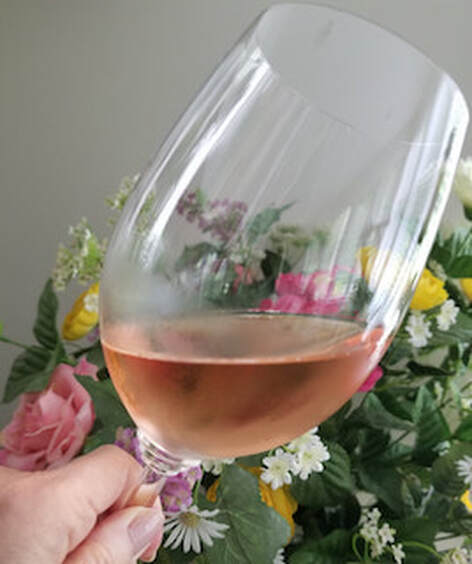

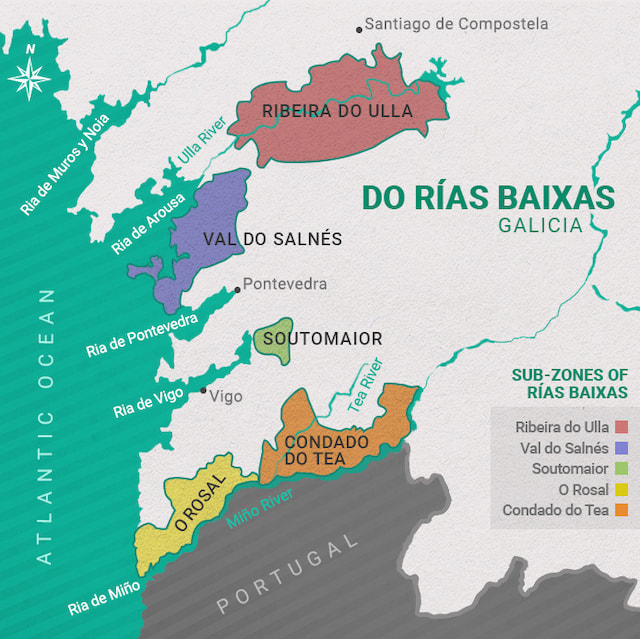

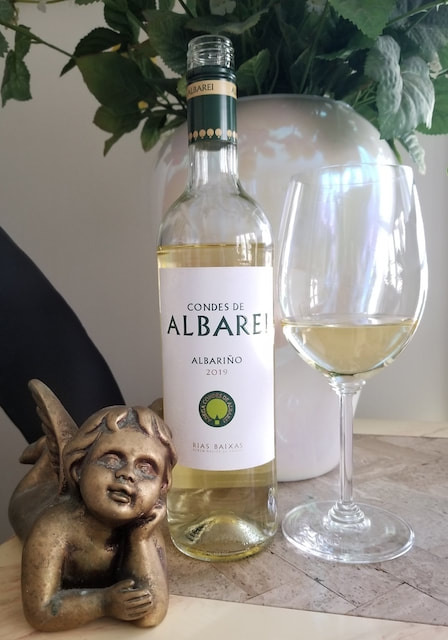
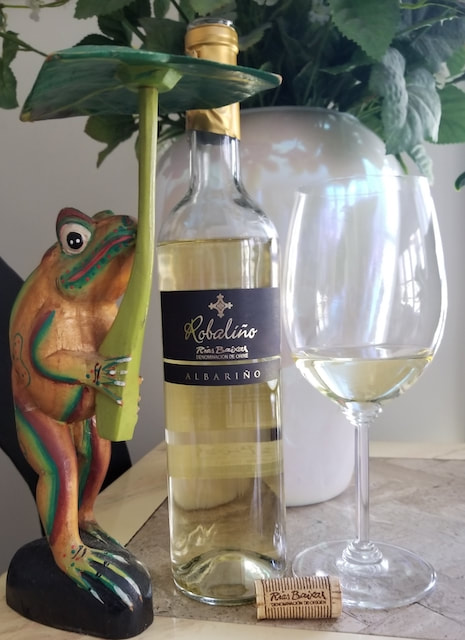
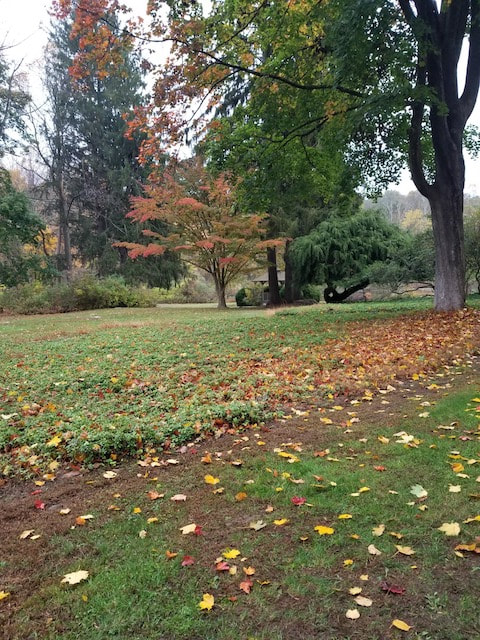
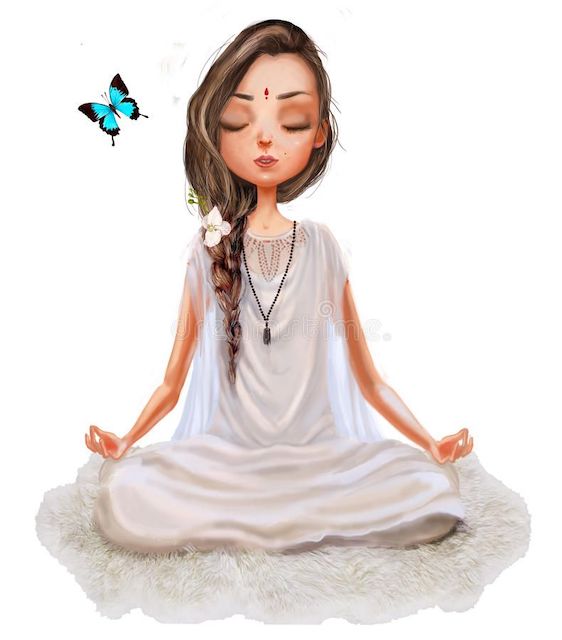

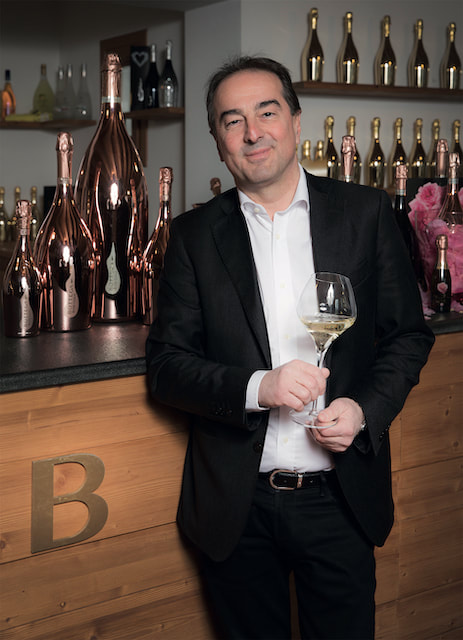
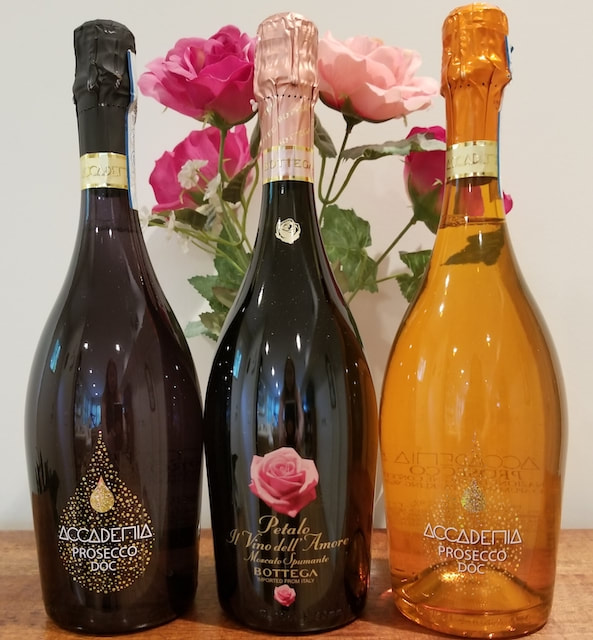
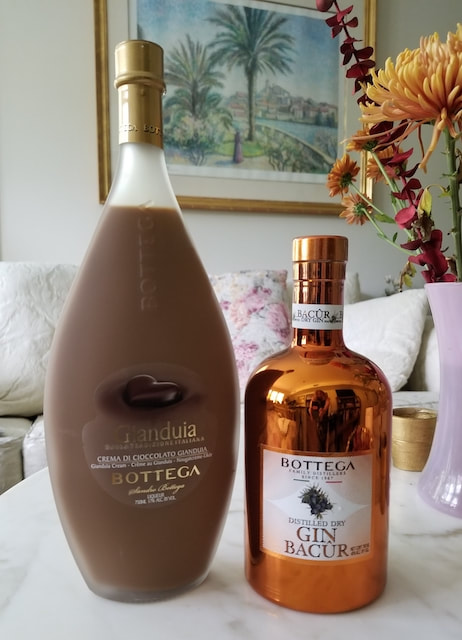
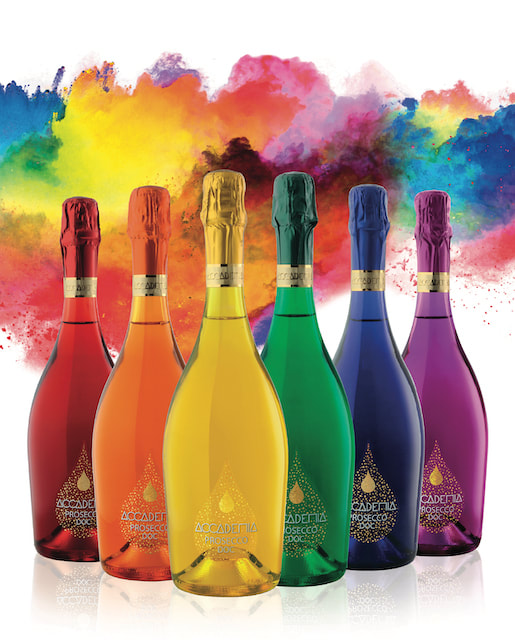
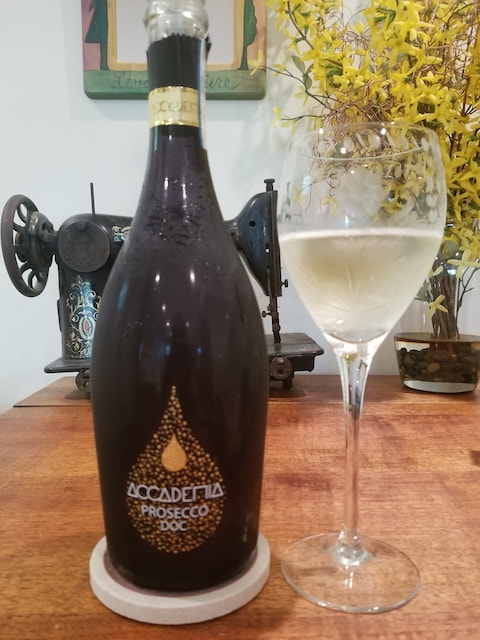

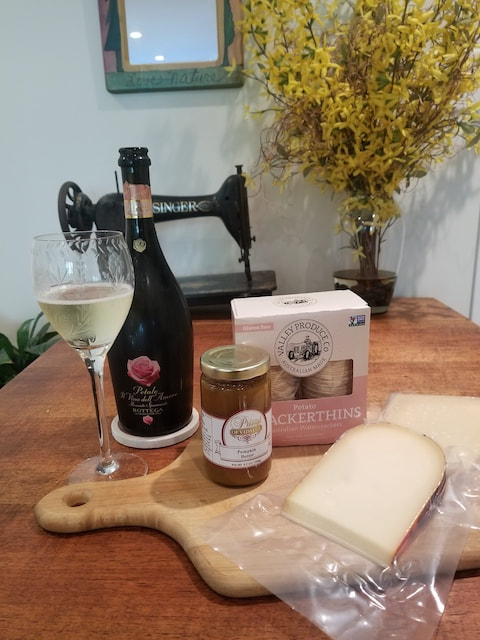
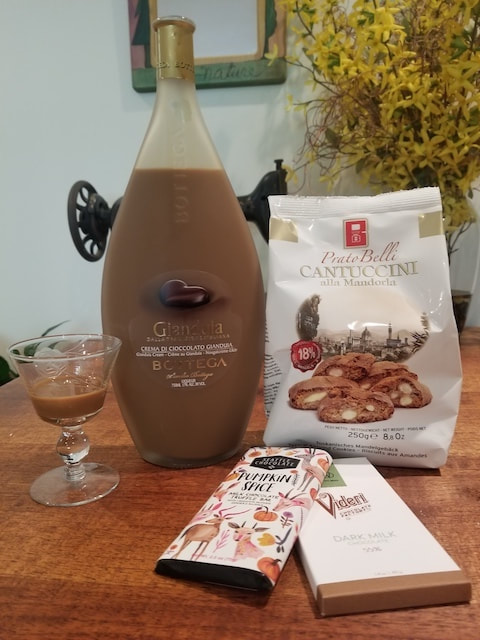
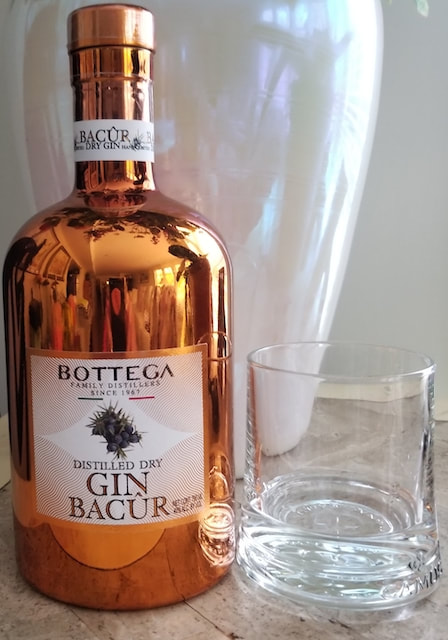

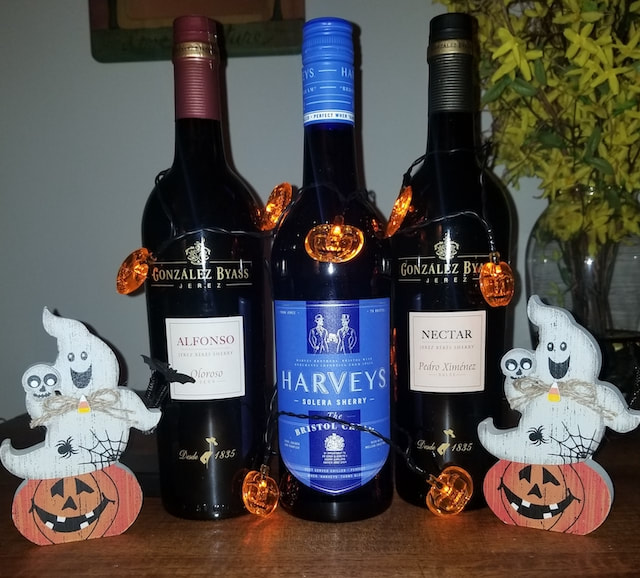
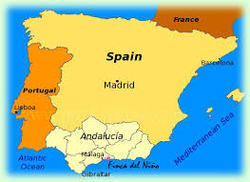
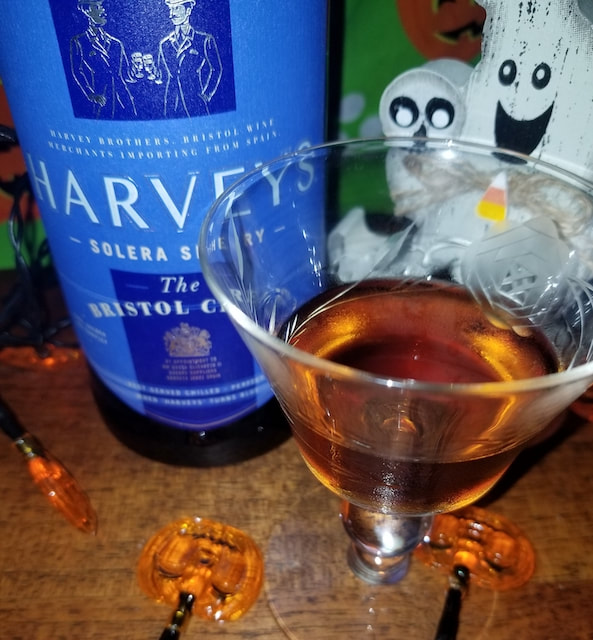
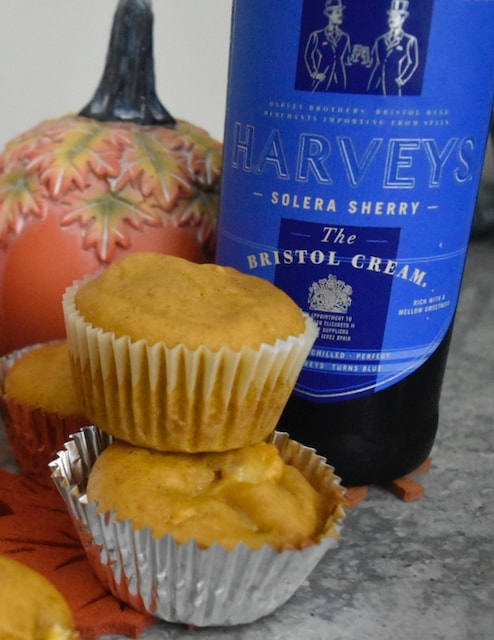
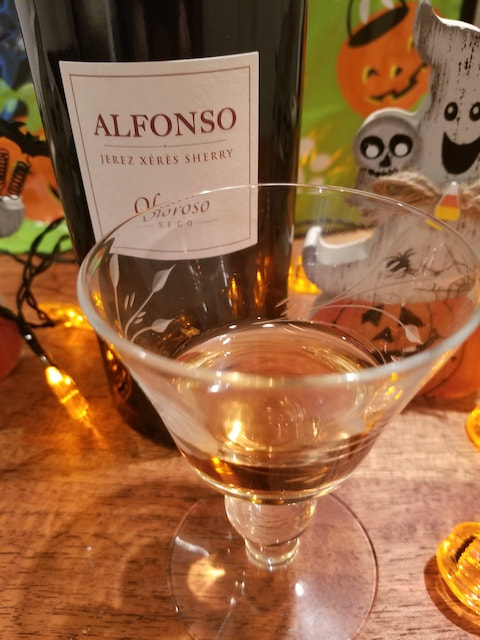

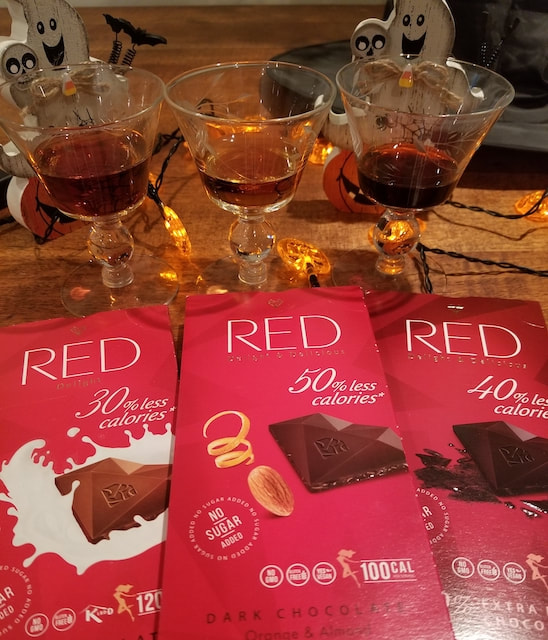
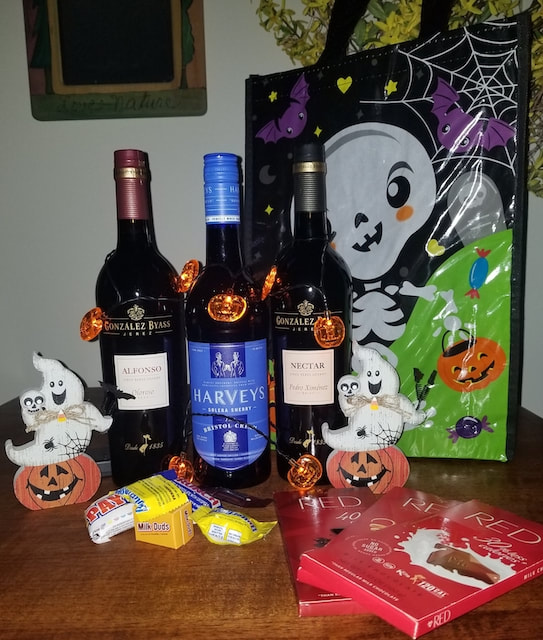
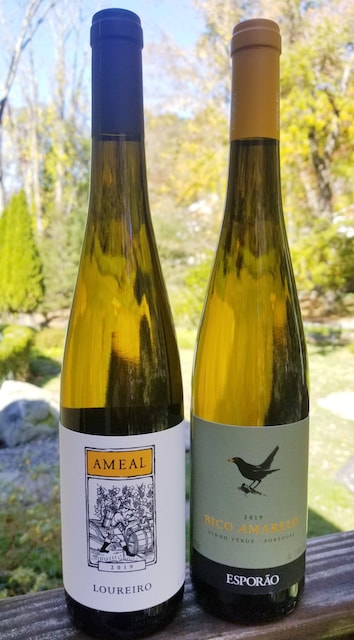


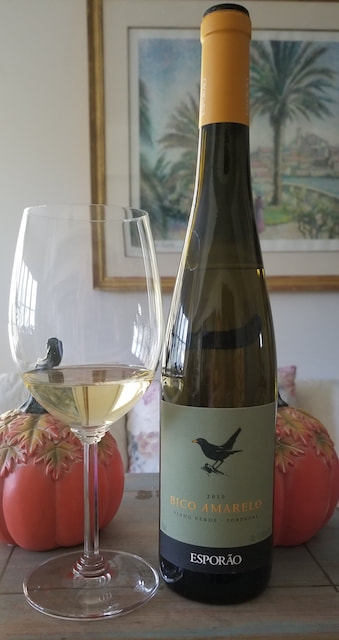
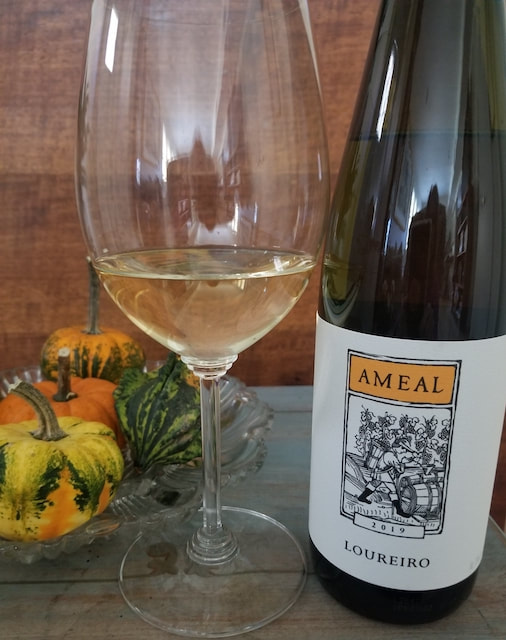
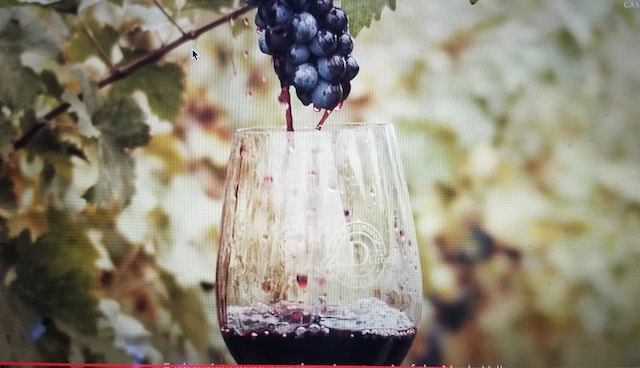
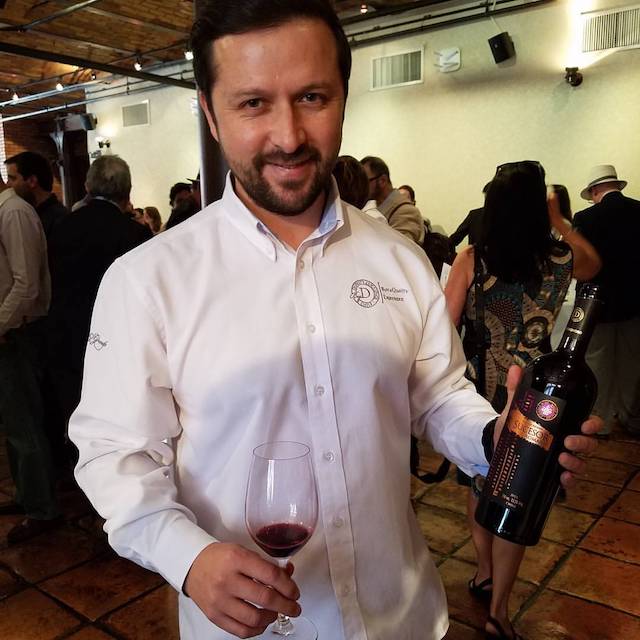

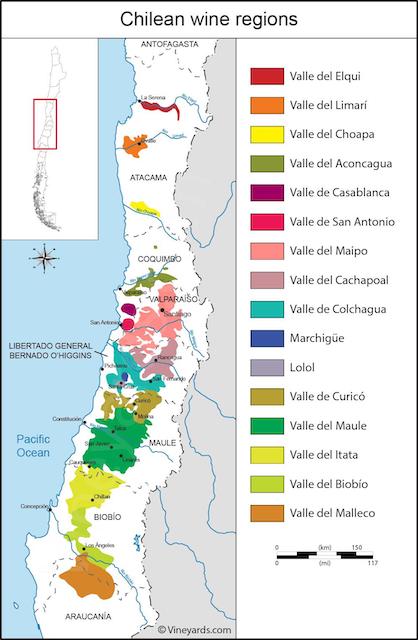
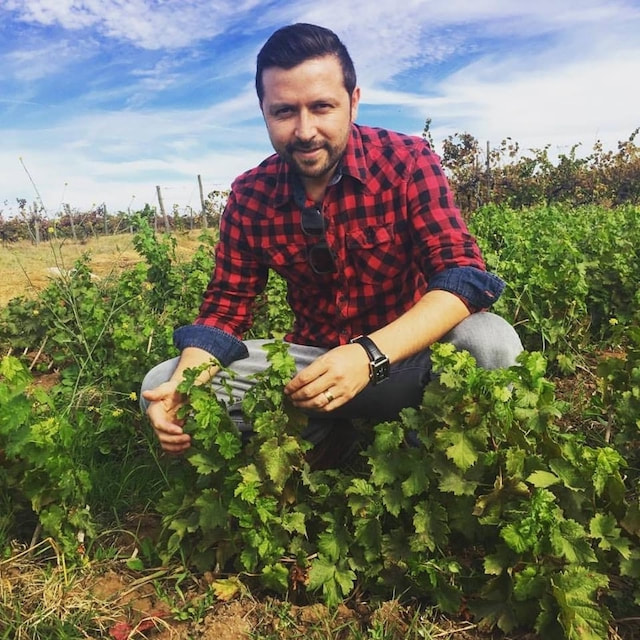
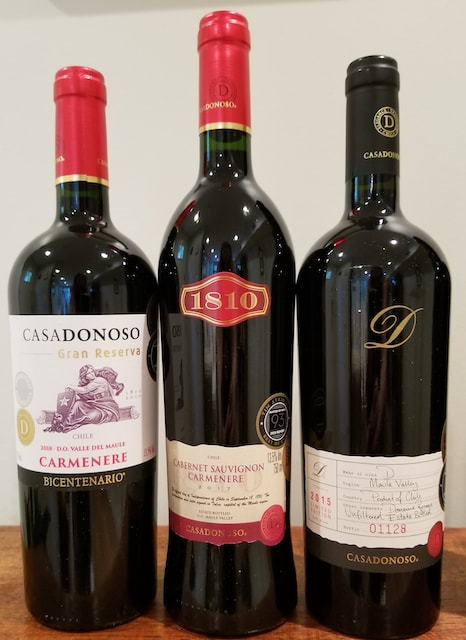
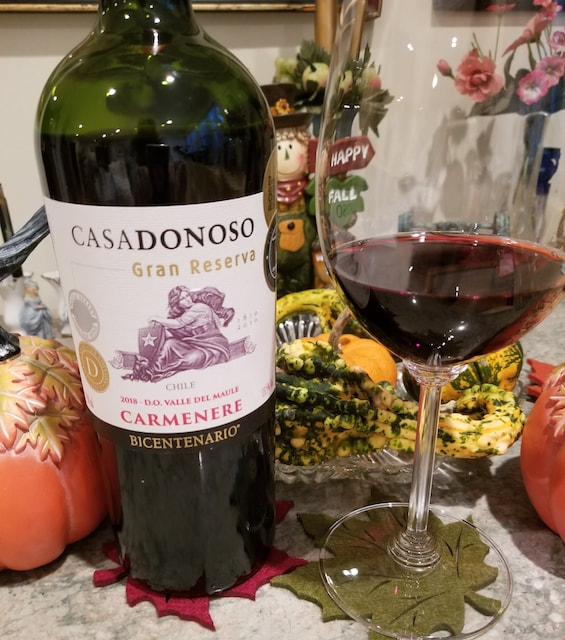
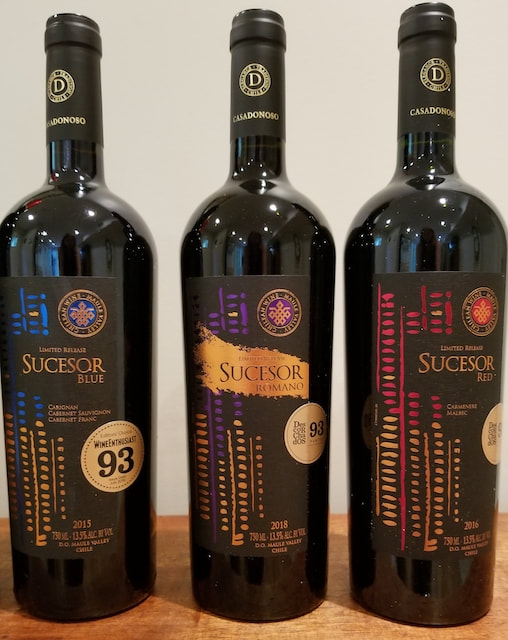
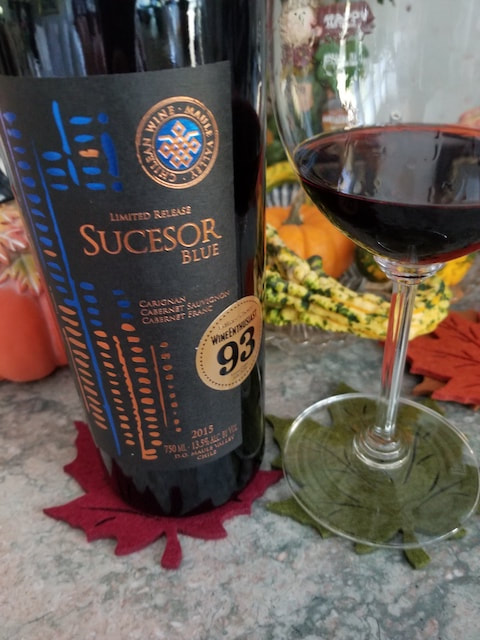
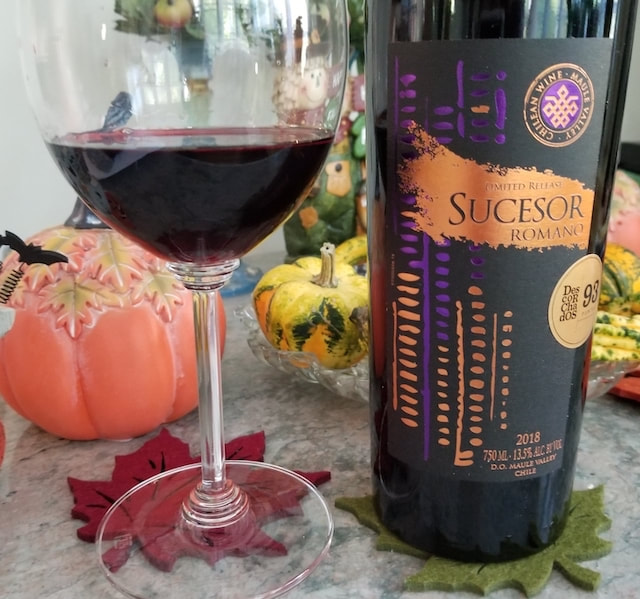
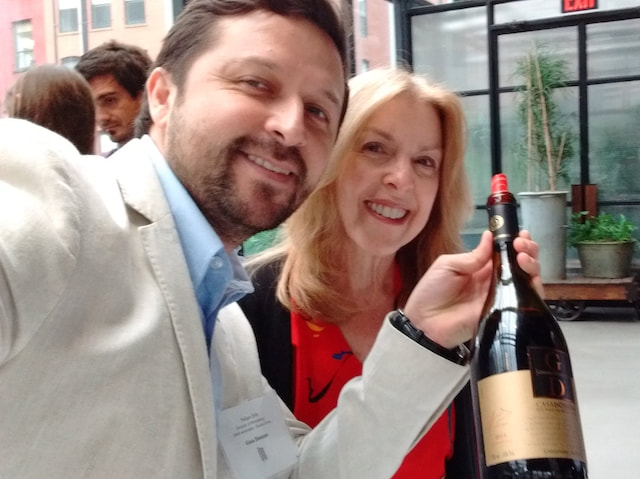

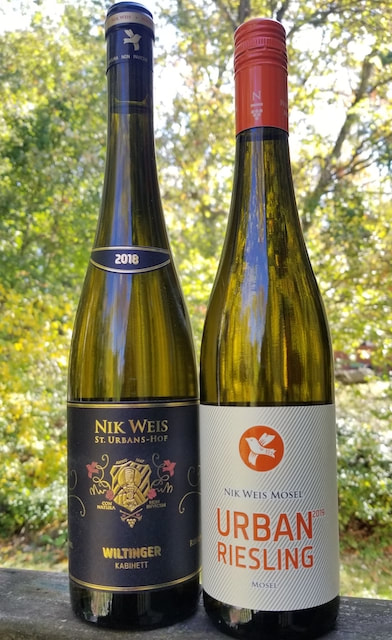
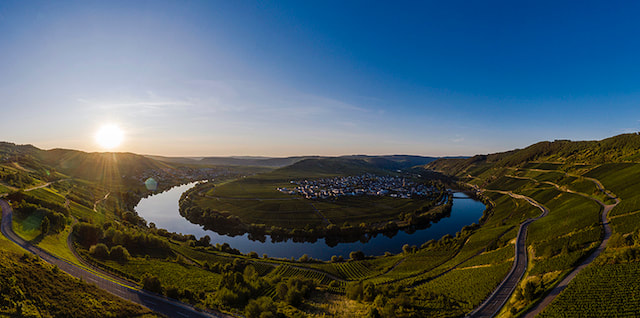
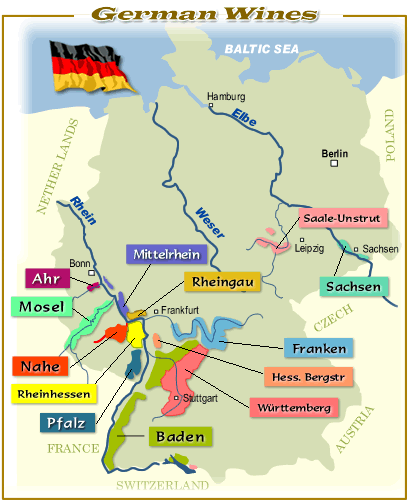

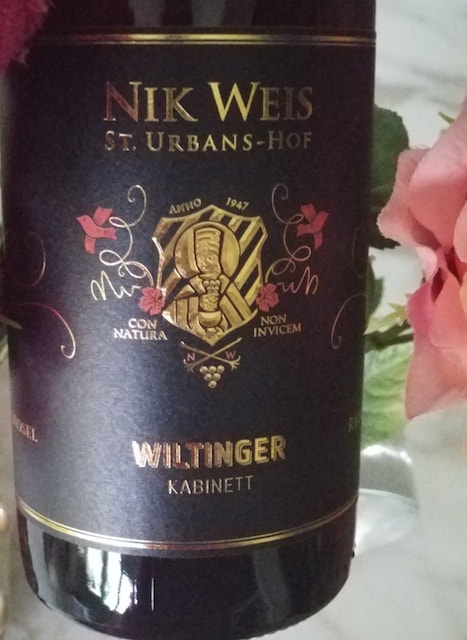
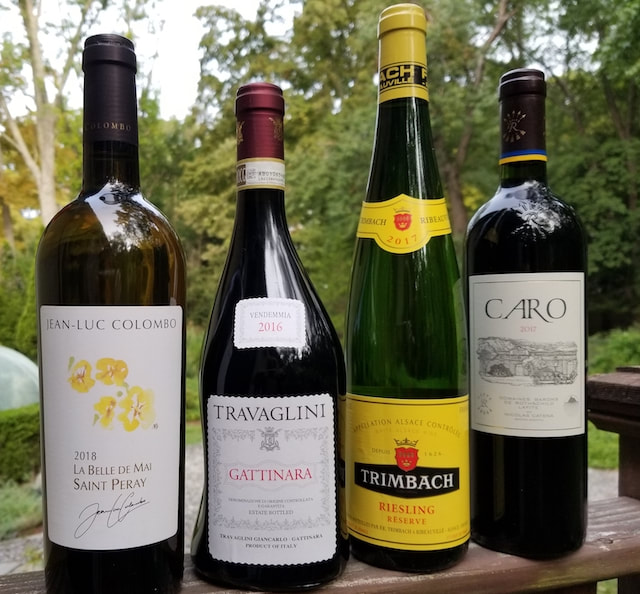
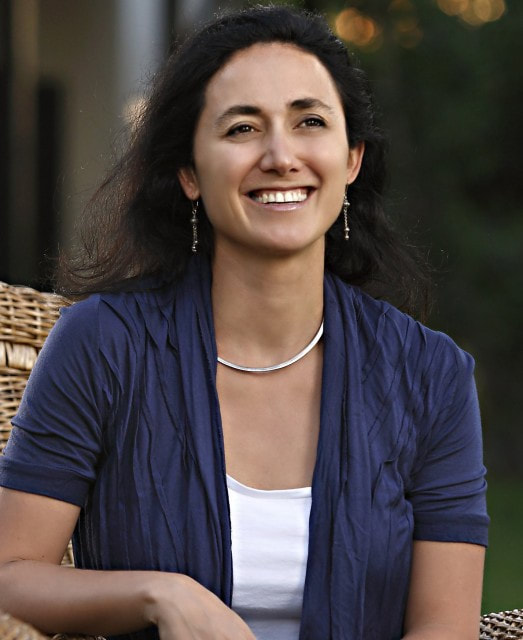
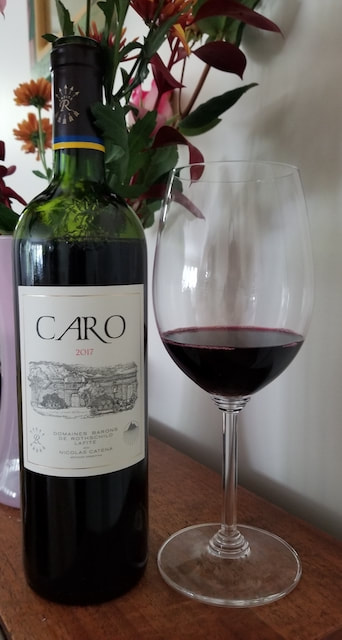
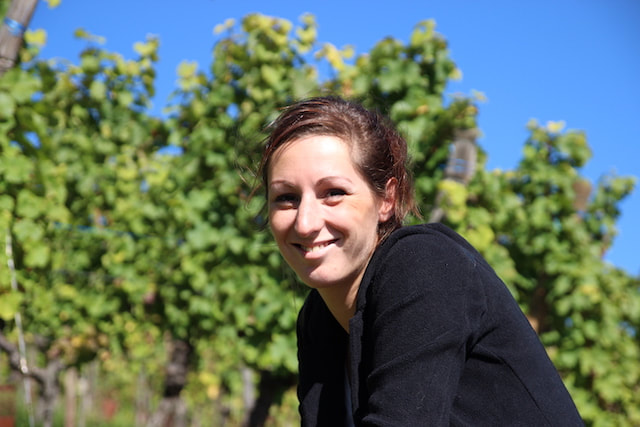
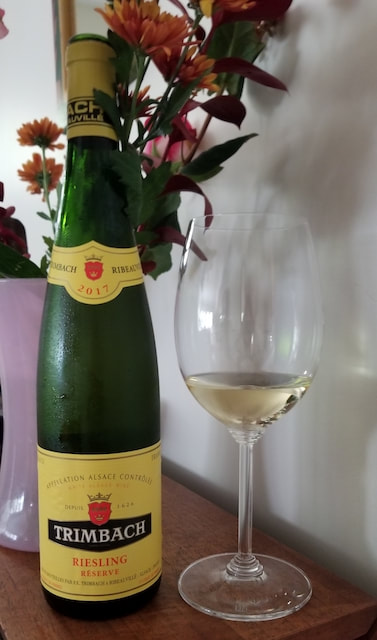
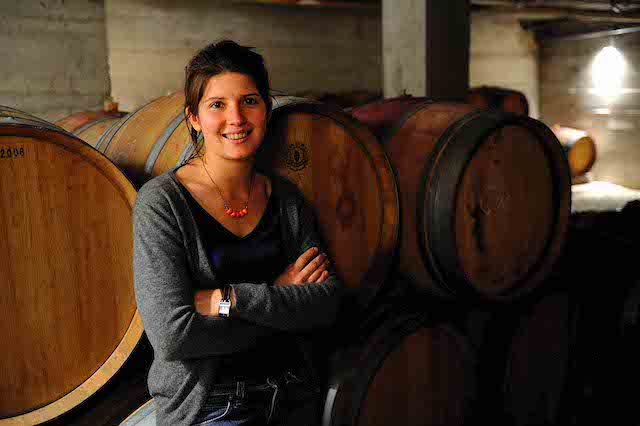

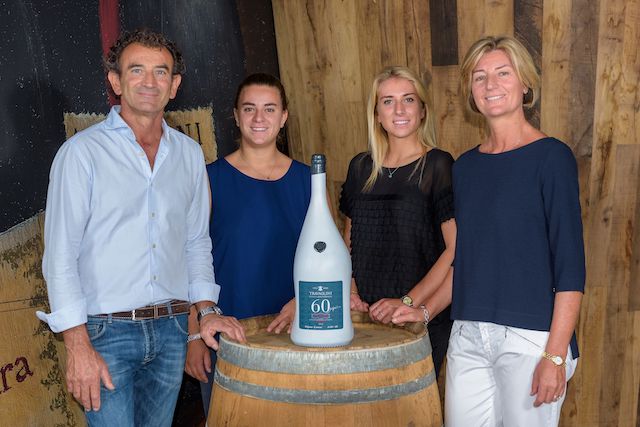
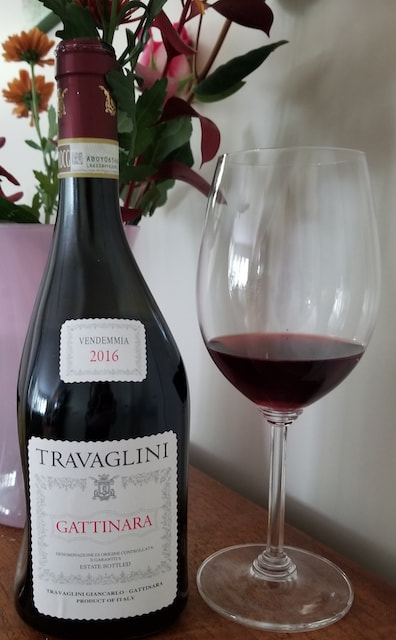
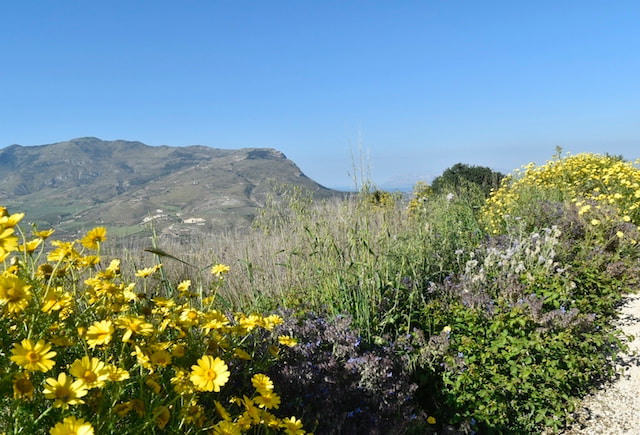
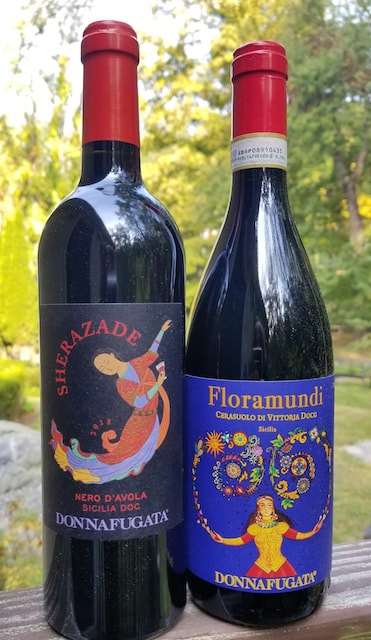

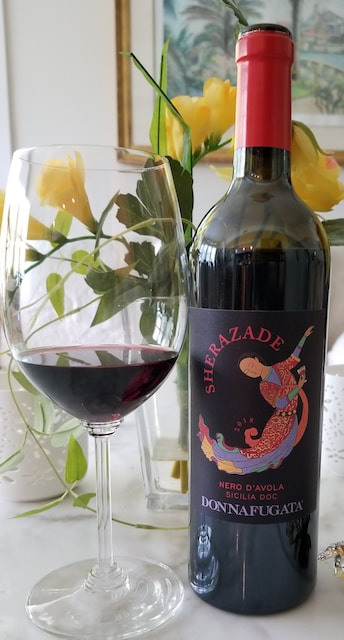
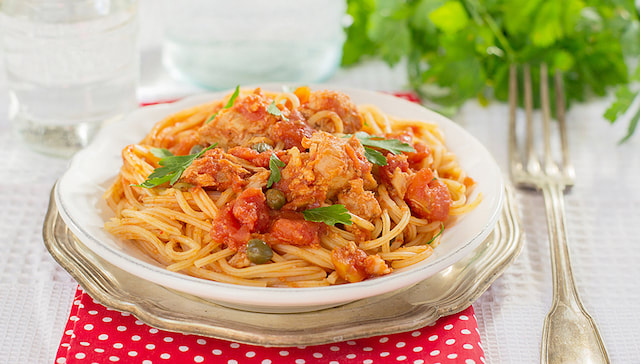
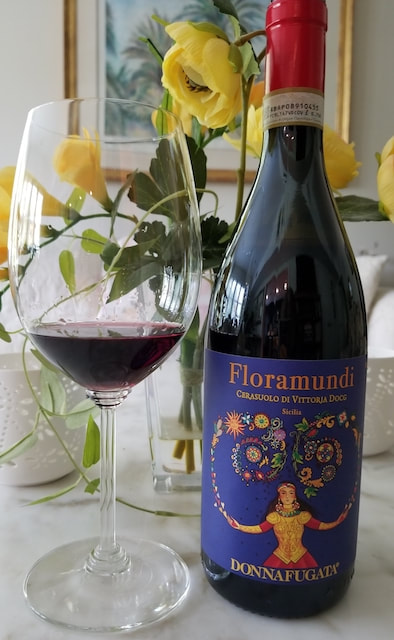
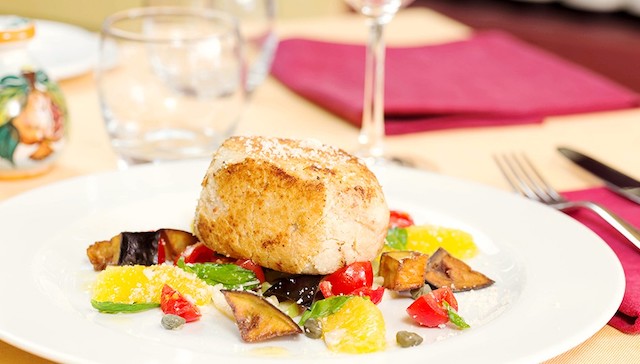
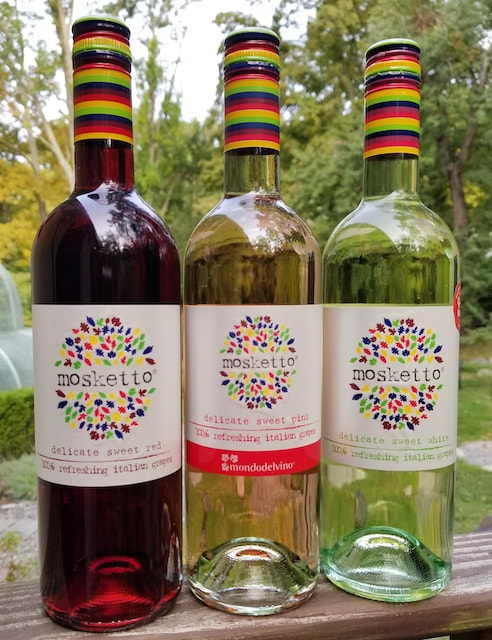
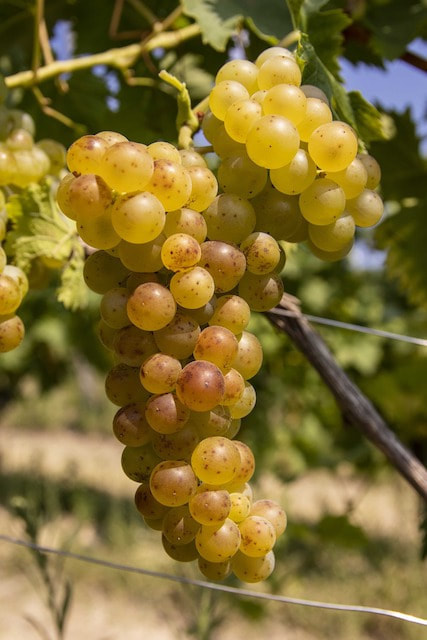
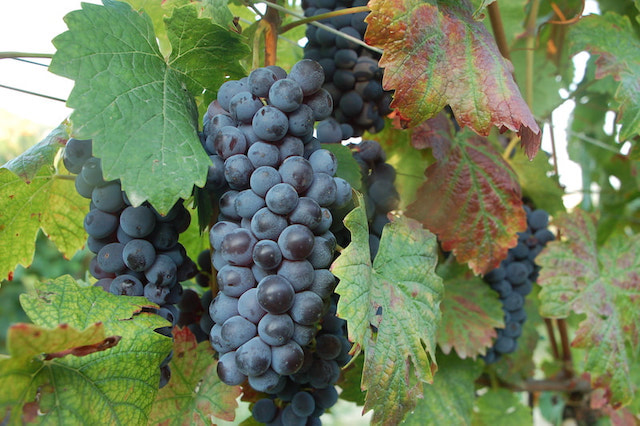
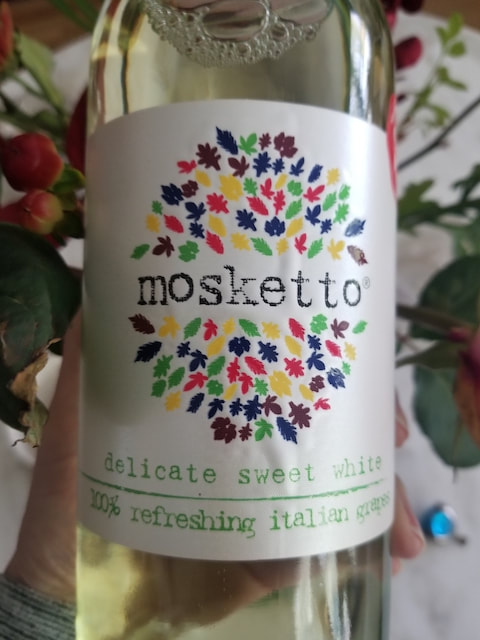
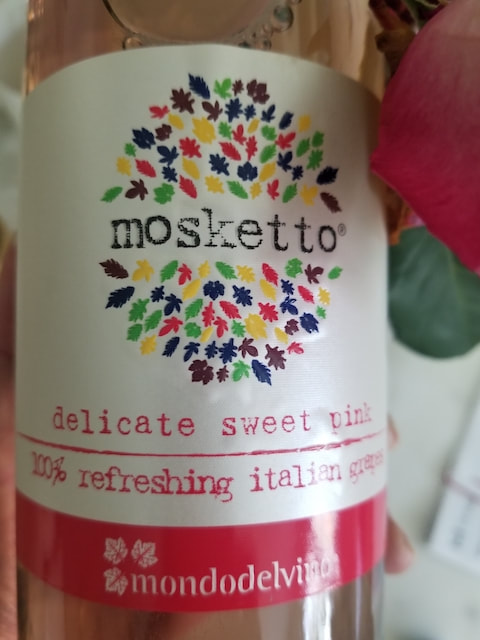
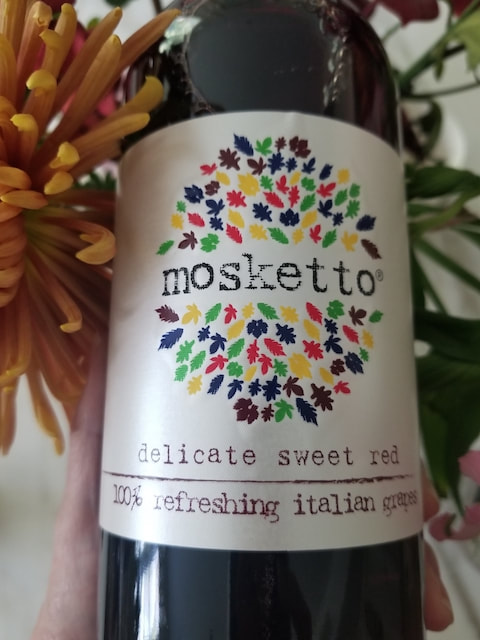
 RSS Feed
RSS Feed